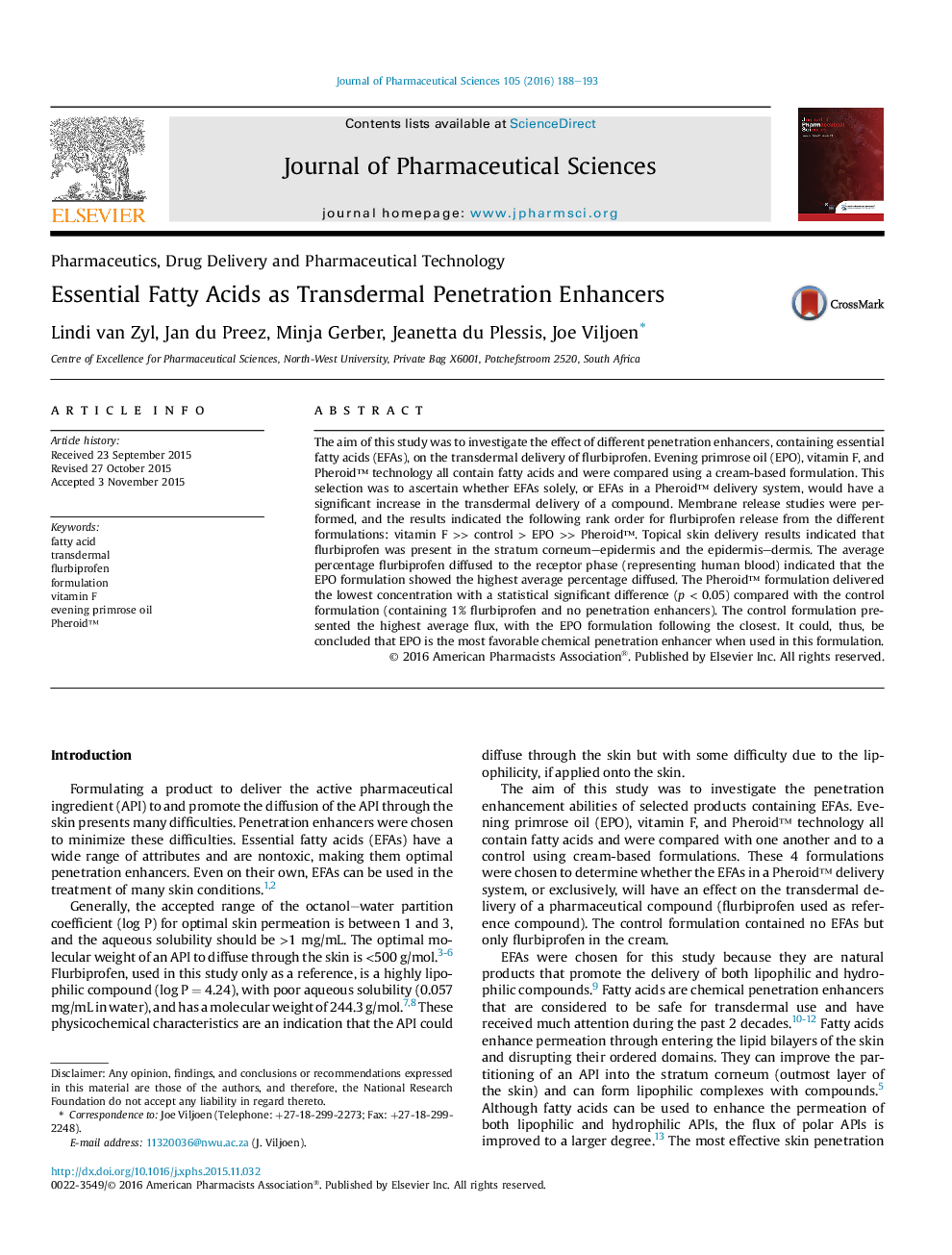| Article ID | Journal | Published Year | Pages | File Type |
|---|---|---|---|---|
| 2484452 | Journal of Pharmaceutical Sciences | 2016 | 6 Pages |
Abstract
The aim of this study was to investigate the effect of different penetration enhancers, containing essential fatty acids (EFAs), on the transdermal delivery of flurbiprofen. Evening primrose oil (EPO), vitamin F, and Pheroid⢠technology all contain fatty acids and were compared using a cream-based formulation. This selection was to ascertain whether EFAs solely, or EFAs in a Pheroid⢠delivery system, would have a significant increase in the transdermal delivery of a compound. Membrane release studies were performed, and the results indicated the following rank order for flurbiprofen release from the different formulations: vitamin F >> control > EPO >> Pheroidâ¢. Topical skin delivery results indicated that flurbiprofen was present in the stratum corneum-epidermis and the epidermis-dermis. The average percentage flurbiprofen diffused to the receptor phase (representing human blood) indicated that the EPO formulation showed the highest average percentage diffused. The Pheroid⢠formulation delivered the lowest concentration with a statistical significant difference (p < 0.05) compared with the control formulation (containing 1% flurbiprofen and no penetration enhancers). The control formulation presented the highest average flux, with the EPO formulation following the closest. It could, thus, be concluded that EPO is the most favorable chemical penetration enhancer when used in this formulation.
Related Topics
Health Sciences
Pharmacology, Toxicology and Pharmaceutical Science
Drug Discovery
Authors
Lindi van Zyl, Jan du Preez, Minja Gerber, Jeanetta du Plessis, Joe Viljoen,
